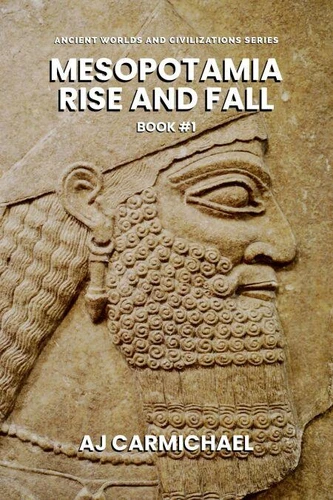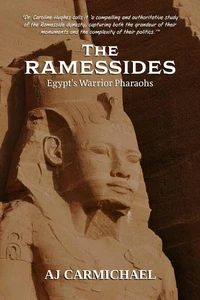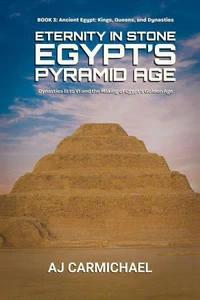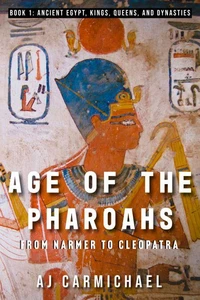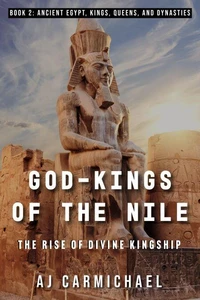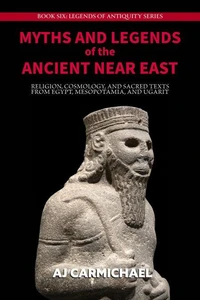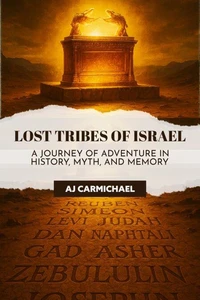Mesopotamia, Rise and Fall. Ancient Worlds and Civilizations, #1
Par :Formats :
Disponible dans votre compte client Decitre ou Furet du Nord dès validation de votre commande. Le format ePub est :
- Compatible avec une lecture sur My Vivlio (smartphone, tablette, ordinateur)
- Compatible avec une lecture sur liseuses Vivlio
- Pour les liseuses autres que Vivlio, vous devez utiliser le logiciel Adobe Digital Edition. Non compatible avec la lecture sur les liseuses Kindle, Remarkable et Sony
 , qui est-ce ?
, qui est-ce ?Notre partenaire de plateforme de lecture numérique où vous retrouverez l'ensemble de vos ebooks gratuitement
Pour en savoir plus sur nos ebooks, consultez notre aide en ligne ici
- FormatePub
- ISBN8215561904
- EAN9798215561904
- Date de parution12/10/2022
- Protection num.pas de protection
- Infos supplémentairesepub
- ÉditeurWMG Publishing
Résumé
The most famous legacies of Mesopotamia are its human-headed, winged bulls and wedge-shaped writing system. Even though these objects offer a glimpse into an ancient culture's grandeur and mystery, the region's influence extends far beyond them. One of the first civilizations in the world, Mesopotamia is often called the "cradle of civilization." The civilization contributed to the development of written language, economics, law, and religion.
The pages of this book discuss many of these contributions. In Mesopotamia, for example, the lunar calendar was divided into two seasons, and the year was divided into 12 months. There were seven days in a week in the Sumerian calendar. Sexagesimal, or base 60, mathematics survives to this day based on 60-minute hours and 24-hour days in Mesopotamia. The term Mesopotamia is typically used by historians to refer to the region in southwest Asia that includes modern-day Iraq and parts of Turkey, Iran, and Syria.
Hellenistic Greeks used Mesopotamos to refer to the area between the Euphrates and Tigris rivers. Fertile soil and water provided by these rivers enabled humankind to abandon its nomadic hunter-gatherer lifestyle and become sedentary and agrarian. The agricultural revolution was born in Mesopotamia because of this feature. Almost 2, 000 years ago, Mesopotamia had little information about itself. The history and culture of the region are revealed in the Hebrew Bible.
During the fifth century BC, Herodotus described the area for the first time. Anabasis ("Upcountry March"), a Greek mercenary, historian, and philosopher's account of his experiences crossing Anatolia and traveling along the Tigris and Euphrates, was written over 100 years later. A Chaldean priest of Bel who migrated to Greece left behind some of the region's most detailed and reliable accounts, even though his writings are only extant in fragments.
The pages of this book discuss many of these contributions. In Mesopotamia, for example, the lunar calendar was divided into two seasons, and the year was divided into 12 months. There were seven days in a week in the Sumerian calendar. Sexagesimal, or base 60, mathematics survives to this day based on 60-minute hours and 24-hour days in Mesopotamia. The term Mesopotamia is typically used by historians to refer to the region in southwest Asia that includes modern-day Iraq and parts of Turkey, Iran, and Syria.
Hellenistic Greeks used Mesopotamos to refer to the area between the Euphrates and Tigris rivers. Fertile soil and water provided by these rivers enabled humankind to abandon its nomadic hunter-gatherer lifestyle and become sedentary and agrarian. The agricultural revolution was born in Mesopotamia because of this feature. Almost 2, 000 years ago, Mesopotamia had little information about itself. The history and culture of the region are revealed in the Hebrew Bible.
During the fifth century BC, Herodotus described the area for the first time. Anabasis ("Upcountry March"), a Greek mercenary, historian, and philosopher's account of his experiences crossing Anatolia and traveling along the Tigris and Euphrates, was written over 100 years later. A Chaldean priest of Bel who migrated to Greece left behind some of the region's most detailed and reliable accounts, even though his writings are only extant in fragments.
The most famous legacies of Mesopotamia are its human-headed, winged bulls and wedge-shaped writing system. Even though these objects offer a glimpse into an ancient culture's grandeur and mystery, the region's influence extends far beyond them. One of the first civilizations in the world, Mesopotamia is often called the "cradle of civilization." The civilization contributed to the development of written language, economics, law, and religion.
The pages of this book discuss many of these contributions. In Mesopotamia, for example, the lunar calendar was divided into two seasons, and the year was divided into 12 months. There were seven days in a week in the Sumerian calendar. Sexagesimal, or base 60, mathematics survives to this day based on 60-minute hours and 24-hour days in Mesopotamia. The term Mesopotamia is typically used by historians to refer to the region in southwest Asia that includes modern-day Iraq and parts of Turkey, Iran, and Syria.
Hellenistic Greeks used Mesopotamos to refer to the area between the Euphrates and Tigris rivers. Fertile soil and water provided by these rivers enabled humankind to abandon its nomadic hunter-gatherer lifestyle and become sedentary and agrarian. The agricultural revolution was born in Mesopotamia because of this feature. Almost 2, 000 years ago, Mesopotamia had little information about itself. The history and culture of the region are revealed in the Hebrew Bible.
During the fifth century BC, Herodotus described the area for the first time. Anabasis ("Upcountry March"), a Greek mercenary, historian, and philosopher's account of his experiences crossing Anatolia and traveling along the Tigris and Euphrates, was written over 100 years later. A Chaldean priest of Bel who migrated to Greece left behind some of the region's most detailed and reliable accounts, even though his writings are only extant in fragments.
The pages of this book discuss many of these contributions. In Mesopotamia, for example, the lunar calendar was divided into two seasons, and the year was divided into 12 months. There were seven days in a week in the Sumerian calendar. Sexagesimal, or base 60, mathematics survives to this day based on 60-minute hours and 24-hour days in Mesopotamia. The term Mesopotamia is typically used by historians to refer to the region in southwest Asia that includes modern-day Iraq and parts of Turkey, Iran, and Syria.
Hellenistic Greeks used Mesopotamos to refer to the area between the Euphrates and Tigris rivers. Fertile soil and water provided by these rivers enabled humankind to abandon its nomadic hunter-gatherer lifestyle and become sedentary and agrarian. The agricultural revolution was born in Mesopotamia because of this feature. Almost 2, 000 years ago, Mesopotamia had little information about itself. The history and culture of the region are revealed in the Hebrew Bible.
During the fifth century BC, Herodotus described the area for the first time. Anabasis ("Upcountry March"), a Greek mercenary, historian, and philosopher's account of his experiences crossing Anatolia and traveling along the Tigris and Euphrates, was written over 100 years later. A Chaldean priest of Bel who migrated to Greece left behind some of the region's most detailed and reliable accounts, even though his writings are only extant in fragments.

